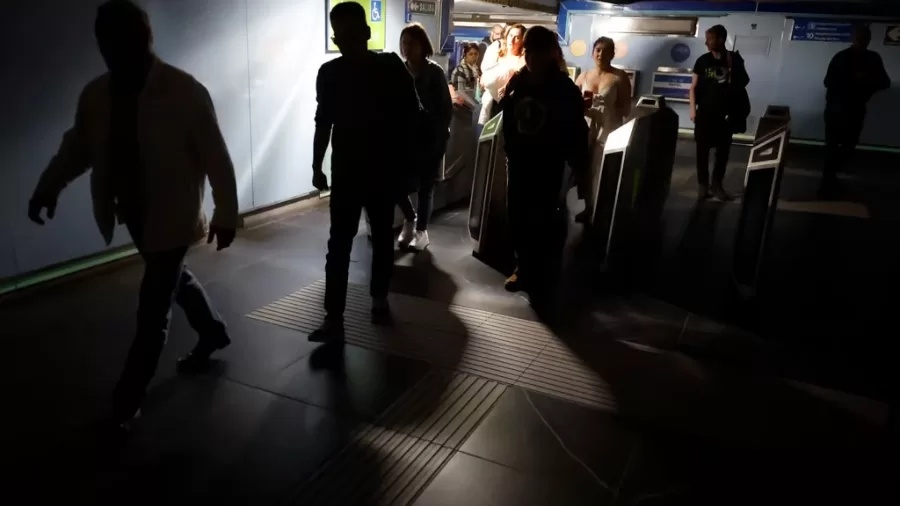Resources
Millions Left in the Dark: What Triggered the Iberian Power Collapse?

- More than 10 million people across Spain and Portugal lost power as the grid dropped from 25,184 MW to 12,425 MW in minutes, triggering the region’s largest blackout since 2001.
- No evidence of cyberattack found: National cybersecurity agencies confirmed the cause was linked to grid instability triggered by rare atmospheric interference.
A Region in the Dark
On the afternoon of 28 April 2025, much of Spain and Portugal came to a halt.
Cities lost power. Trains stopped. Traffic lights failed. Entire neighbourhoods went dark without warning.
The blackout started at around 12:33 p.m. local time. Within minutes, both national systems experienced a huge decline in electrical flow, from more than 25,000 megawatts to about half that.
The effects were instant and wide-reaching.
Questions spread quickly.
Was this a cyberattack? Sabotage? A system error?
By evening, while power had returned to most areas, uncertainty remained.
Early Speculations: Cyberattack or Not?
Given the scale and suddenness of the outage, many suspected a cyberattack.
Concerns arose when transportation, communication, and emergency systems were disrupted in two countries.
But official investigations have ruled out that theory.
Spanish and Portuguese cybersecurity agencies clearly stated there was no evidence of hacking or digital interference.
The Portuguese National Cybersecurity Centre confirmed they found no trace of coordinated digital attacks.
The EU’s cybercrime body echoed the statement, suggesting that the root cause appeared to be physical or atmospheric, not digital.
So What Really Happened?
Current findings point to a rare combination of environmental and technical triggers.
Portugal’s grid operator, REN, reported that the outage began with a large oscillation in Spain’s power grid, which spread to Portugal, though the exact trigger remains under investigation.
This refers to rapid temperature and pressure shifts that can disrupt high-voltage transmission lines.
This tremor resulted in a frequency mismatch in the Iberian Peninsula’s power grid.
When electricity systems are unable to maintain a constant frequency (usually around 50 Hz in Europe), they initiate automated safety shutdowns to protect infrastructure.
That’s what happened here.
As the grid destabilised, protective mechanisms kicked in, cutting off parts of the network to prevent equipment failure.
This led to a cascading effect, disconnecting Spain and Portugal from the rest of the European grid.
Technical Overview of the Drop
Grid operators throughout Europe rely on coordinated systems. When one region’s consumption or load falls dramatically, the entire equilibrium suffers.
In this case:
- Electricity demand dropped from 25,184 megawatts to 12,425 megawatts in moments
- The resulting imbalance desynchronised the Iberian grid from the continental European system
- Automatic load-shedding protocols were activated, cutting power in thousands of locations.
This type of event is rare. It’s not caused by demand alone but by how quickly supply and demand diverge.
How the Blackout Affected Daily Life
The blackout caused major disruption across sectors.
While not long in duration, the shock to daily infrastructure was immediate.
- Transport: Trains and metros in Madrid, Lisbon, and Porto came to a halt in the middle of their journeys. Air traffic control relied on backup power.
- Traffic Control: Lights went out in dense urban zones. Police were deployed to key junctions to direct the flow manually.
- Communications: Power went out at mobile towers and broadband routers. Internet access has declined precipitously in certain locations.
- Healthcare: Hospitals shifted to emergency generators. In Lisbon, surgeries were paused and patients redirected where necessary.
- Retail and Banking: Card machines and ATMs stopped functioning. Some supermarkets closed temporarily due to safety concerns.
The blackout highlighted how closely daily systems are tied to uninterrupted power, especially in urban environments.
Restoration Timeline
Power began returning to parts of Spain and Portugal within two hours.
By the evening of 28 April, most cities had resumed near-normal function.
Spanish authorities said full restoration took between six and eight hours.
Portugal experienced a slower recovery, particularly in the north and along some coastal areas.
Engineers had to restart grid nodes manually in certain zones.
Operators across Europe have confirmed the issue was contained locally, with no broader impact on the continental grid.
Lessons for Grid Resilience
This event raises important questions about the readiness of national grids for extreme conditions — not just cyber threats but environmental fluctuations.
It also brings into focus how systems across borders are interconnected. A failure in one part can have ripple effects elsewhere.
In the UK, Ofgem and the National Grid will likely review the incident to assess whether similar vulnerabilities could exist here, especially as weather patterns become less predictable.
The blackout serves as a reminder that even highly developed grids can face unexpected stress.
Preparedness is no longer optional.
What Authorities Plan to Do Next
Both Spanish and Portuguese governments have launched detailed reviews.
So far, focus areas include:
- Grid modernisation: Upgrading control systems to react more flexibly to sudden fluctuations
- Weather modelling: Improving prediction tools to foresee atmospheric disturbances
- Public communication: Enhancing alert systems for faster, clearer updates during outages
This instance will also be used by European energy regulators to improve continental frequency management and inter-grid cooperation standards.
What This Means for the Broader Energy Landscape
As Europe moves toward cleaner and more decentralised power sources, grid stability will become harder to maintain.
Wind and solar, while essential, introduce variability that can magnify the kind of imbalances seen here.
Smart grid technology and battery storage are expected to play a bigger role in buffering against these shocks.
For UK energy stakeholders, this event may push forward:
- Investments in backup systems
- More frequent grid stress testing
- Revised emergency recovery plans
The Iberian blackout has become a real-world example of how swiftly energy security may be tested, even without sabotage.
Final Thought
The 28 April blackout in Spain and Portugal wasn’t caused by cyberwarfare or sabotage.
It was the result of rare but natural environmental pressure, exposing fragilities in a high-tech system we often take for granted.
From London to Lisbon, the lesson is clear: resilience in energy infrastructure is not about avoiding disruption completely — it’s about being ready to restore, adapt, and learn when it comes.


















































